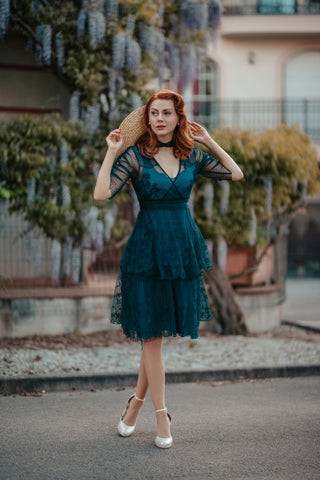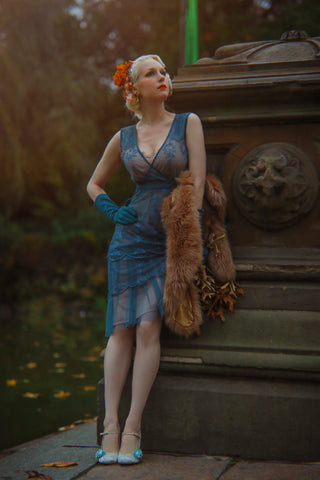The Jazz Age, the Roaring Twenties – this era conjures images of flapper dresses, smoky speakeasies, and, most vividly, energetic dance floors. While dance might be a hobby for some today, in the 1920s, 1920s Dance styles were the heartbeat of social life. Young people flocked to dance halls and hidden speakeasies, not just to socialize and enjoy illicit drinks and cigarettes, but to express a new sense of freedom through movement. This generation, particularly the rebellious Flappers, used dance as a joyful defiance of traditional norms. Several dance crazes exploded across the nation, each with its own level of perceived audacity. To fully embrace these vibrant 1920s dances, Flappers needed the right attire, demanding fashionable clothing and shoes that could keep pace with their dynamic steps. Let’s delve into the most popular 1920s dance styles and explore their profound influence on the era’s revolutionary fashion.
Iconic 1920s Dance Styles That Defined an Era
The Charleston: The Quintessential 1920s Dance
The Charleston undoubtedly reigns as the most emblematic 1920s dance style. Whenever the Roaring Twenties are depicted in popular culture, a lively rendition of the Charleston is almost guaranteed. This energetic dance, adaptable for solo dancers or partners, became a sensation in the vibrant party scene of the Jazz Age. Its origins trace back to African-American dance halls in Harlem during the early 1920s. However, it was its Broadway debut that catapulted the Charleston into mainstream consciousness. The 1923 Broadway hit “Running Wild” featured a thrilling dance sequence set to “The Charleston,” a fast-paced 4/4 jazz tune by James P. Johnson. Immediately after its theatrical premiere, the Charleston craze swept the nation, embraced enthusiastically by Flappers and their male companions. Characterized by twisting feet, spirited leg kicks, and synchronized arm swings, the Charleston is intrinsically linked to the upbeat rhythms of jazz music, mirroring the energy of the song that gave it its name. It’s a dance that embodies the exuberance of the era.
 Flapper in a 1920s dress dancing the Charleston
Flapper in a 1920s dress dancing the Charleston
Explore our 1920s dress collection
The Fox Trot: A Smooth and Enduring Dance
No discussion of popular 1920s dance styles is complete without acknowledging the elegant Fox Trot. Emerging in the mid-1910s, the Fox Trot maintained its popularity throughout the 1920s and 1930s, even influencing dance trends in the 1940s and 1950s. Some even suggest that the 1970s disco craze “The Hustle” owes a debt to the Fox Trot’s foundational steps. In 1914, dancer Henry Fox was engaged to perform a vaudeville act in New York City. His performance with the “American Beauties” featured trotting steps synchronized to ragtime music, captivating audiences. This captivating dance was widely imitated, initially known as “Fox’s Trot” before simplifying to “The Fox Trot.” At its core, the Fox Trot combines forward and sideways movements, executed to music in 4/4 time. Its smooth, gliding nature made it a versatile and enduring dance that appealed to a wide range of dancers.
The Texas Tommy: The Forerunner of Swing
The Texas Tommy holds the distinction of being considered the first swing dance to grace dance halls. Originating in San Francisco around 1910, it was reportedly a fixture in African American dance venues. Its breakthrough to mainstream popularity occurred when it was danced at The Fairmont Hotel, a more “respectable” establishment catering to a white audience. The renowned dancer Ethel Williams introduced the Texas Tommy to New York City, bringing the dance movements from San Francisco. There, it was adapted for the stage, featuring in the celebrated Broadway production “Ziegfeld Follies.” The Texas Tommy paved the way for “The Lindy Hop” of the 1930s, igniting the swing dance craze of the 1940s. Contemporary critics described the Texas Tommy as “acrobatic,” “eccentric,” and “a whirling couples dance.” Notably, it was the pioneering dance to incorporate a breakaway step and an 8-count rhythm, innovations that would become hallmarks of swing dance.
 Roaring 20s style dresses for dancing
Roaring 20s style dresses for dancing
Discover Roaring 20s dresses for your next dance
The Black Bottom: A Dance with Playful Instructions
Like many influential 1920s dances, The Black Bottom emerged from African American dance halls. While its origins are rooted in New Orleans in the early 1900s, its name is linked to an area of Detroit known as “Black Bottom.” The dance was deeply ingrained in African American culture in the South. By 1924, it had migrated to Harlem, where Ann Pennington and Tom Patricola showcased it in a Broadway musical revue. Its stage debut launched it into a national phenomenon, rapidly surpassing “The Charleston” in widespread popularity. Intriguingly, The Black Bottom even came with written instructions, capturing its playful and somewhat improvisational nature: “Hop down front then doodle back / Mooch to your left then mooch to the right / Hands on your hips and do the mess around / Break a leg until you’re near the ground.” While these slang terms might seem cryptic today, they were part of the 1920s vernacular, spreading the excitement of this popular dance craze through word-of-mouth and playful instruction.
The Shimmy: Scandalously Shaking Things Up
While all forms of 1920s dancing were considered somewhat risqué by traditional standards, The Shimmy was perceived as the most daring of all 1920s dance styles. From a modern perspective, this simple dance appears remarkably tame. However, considering the recent Victorian era with its emphasis on modesty and restraint, it’s understandable why The Shimmy was frequently banned from dance halls in the 1920s. The Shimmy’s roots can be traced to dances like the “Haitian Voodoo” and the Native American “Shim-Me-Sha-Wabble.” Its nationwide popularity is largely attributed to Gilda Gray, a dancer of Polish heritage. When questioned about her distinctive new dance, she reportedly quipped, “I’m just shaking my chemise.” Her Polish accent supposedly transformed “chemise” into “shimmy” in the public ear. While an entertaining anecdote, its veracity remains debated. Actress Mae West also claimed to have originated the name after witnessing the dance in African American clubs. Regardless of its name’s precise origin, The Shimmy caused a sensation. The dance involves keeping the lower body relatively still while rapidly moving the chest and shoulders back and forth, a movement that was considered quite provocative for the time.
The Brazilian Samba: An International Rhythm Arrives
As its name implies, the Brazilian Samba originated in South America in the late 1800s. This vibrant dance gained prominence at events like Carnival before crossing into North America in the early 1900s. Early samba music was often performed by lesser-known musicians, but in 1917, “Pelo Telefone,” a song by a prominent Brazilian musician, was recorded and achieved widespread popularity through radio broadcasts. This breakthrough paved the way for other Brazilian musicians, and these infectious rhythms gradually entered the mainstream. While the Samba was deeply popular in Brazil, it also journeyed across the Western world. In the early 1920s, the Samba took Paris by storm, becoming a major sensation. The samba’s sensual movements soon resonated with the dance hall culture in North America. This musical style also profoundly influenced later genres like Blues and Bossa Nova, demonstrating its lasting impact on music and dance.
How 1920s Dance Fads Revolutionized Fashion
Flappers are renowned for challenging societal conventions. Beyond embracing activities deemed scandalous, such as drinking and smoking, they also adopted bobbed hairstyles and clothing that fundamentally altered women’s fashion forever. Perhaps surprisingly, their passion for dance halls played a pivotal role in shaping fashion trends during this transformative decade. The demands of 1920s dance styles dictated essential changes in undergarments. Restrictive corsets, as one can imagine, were entirely impractical for the energetic dance floor. Women needed freedom of movement and breathability, rendering constricting dresses and undergarments obsolete. Some dance halls even provided “Corset Check Rooms” where women could liberate themselves from their corsets before dancing. Flapper’s shorter skirts were not merely intended to shock older generations; they were essential for the unrestricted leg movements required for dances like The Charleston, The Black Bottom, and The Fox Trot. This practicality is a key reason why shorter dresses became so fashionable in the 1920s. Beyond comfort and modernity, they allowed young women to showcase their intricate footwork. Details like handkerchief hemlines and dazzling embellishments amplified the visual impact of every dance step. Appropriate footwear was equally crucial for a night of dancing and socializing. This need is why the T-strap sandal became a signature shoe of the Jazz Age. Traditional pumps and boots were simply too cumbersome for the dynamic 1920s dances. T-strap designs and ankle straps ensured that a flapper’s shoes remained securely in place while performing kicks and swings. While T-straps and ankle-strap sandals are now viewed primarily as fashion statements, their initial popularity stemmed directly from the practical needs of women enthusiastically embracing the popular dances of the era.

